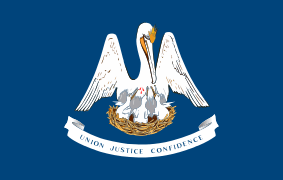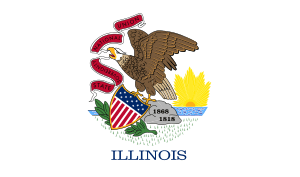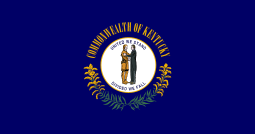Mobile phones and driving safety
Mobile phone use while driving is common, but it is widely considered dangerous due to its potential for causing distracted driving and accidents. Due to the number of accidents that are related to cell phone use while driving, some jurisdictions have made the use of a cell phone while driving illegal. Many jurisdictions have enacted laws to ban handheld mobile phone use. Nevertheless, many jurisdictions allow use of a hands-free device, in which the driver talks using a microphone and a speakerphone. Driving while using a handsfree cellular device is not safer than using a hand held cell phone, as concluded by case-crossover studies,[1][2] epidemiological,[3][4] simulation,[5] and meta-analysis.[6][7] In some cases restrictions are directed only at minors, those who are newly qualified license holders (of any age), or to drivers in school zones. When mobile phones were first introduced, they were typically only able to make voice calls. In the 2000s, as cell phone technology developed, and smartphone usage increased, cell phones can also be used to read or type text messages, surf the Internet and view videos. Activities such as texting while driving can also increase the risk of an accident.
Studies
Prevalence

The Société de l'assurance automobile du Québec (SAAQ), the provincial automobile insurance association in Quebec, conducted a study in on driving and cellphones in 2003. Questionnaires were sent to 175,000 drivers and analysis was done on the 36,078 who responded. The questionnaire asked about driving habits, risk exposure, collisions over the past 24 months, socio-demographic information, and cell phone use. Questionnaires were supported with data from cell phone companies and accident records held by police. The study found that the overall relative risk (RR) of having an accident for cell phone users when compared to non-cell phone users averaged 1.38 across all groups. When adjusted for kilometers driven per year and other crash risk exposures, RR was 1.11 for men and 1.21 for women. They also found that increased cell phone use correlated with an increase in RR. When the same data were reanalyzed using a Bayesian approach, the calculated RR of 0.78 for those making less than 1 call/day and 2.27 for those with more than 7 calls/day was similar to cohort analysis. When the data were reanalyzed using case-crossover analysis, RR was calculated at a much higher 5.13. The authors expressed concern that misclassification of phone calls due to reporting errors of the exact time of the collisions was a major source of bias with all case-crossover analysis of this issue.[3][4][8]
In March 2011 a US insurance company, State Farm Insurance, announced the results of a study which showed 19% of drivers surveyed accessed the Internet on a smart phone while driving.[9] In September 2010, the US National Highway Traffic Safety Administration (NHTSA) released a report on distracted driving fatalities for 2009. The NHTSA considers distracted driving to include some of the following as distractions: other occupants in the car, eating, drinking, smoking, adjusting radio, adjusting environmental control, reaching for object in car, and cell phone use. In 2009 in the US, there was a reported 5,474 people killed by distracted drivers. Of those 995 were considered to be killed by drivers distracted by cell phones. The report doesn't state whether this under or over represents the level of cell phone use amongst drivers, and whether there is a causal relationship.[10]
A 2003 study of US crash data states that driver inattention is estimated to be a factor in 20% to 50% of all police-reported crashes. Driver distraction, a sub-category of inattention, has been estimated to be a contributing factor in 8% to 13% of all crashes. Of distraction-related accidents, cell phone use may range from 1.5 to 5% of contributing factors.[11] However, large percentages of unknowns in each of those categories may cause inaccuracies in these estimations. A 2001 study sponsored by the American Automobile Association recorded "Unknown Driver Attention Status" for 41.5% of crashes, and "Unknown Distraction" in 8.6% of all distraction related accidents.[12] According to NHTSA, "There is clearly inadequate reporting of crashes".[13]
Currently, being distracted by an "outside person, object, event" (commonly known as "rubbernecking") is the most reported cause of distraction-related accidents, followed by "adjusting radio/cassette/CD". "Using/dialing cell phone" is eighth. A 2003 study by the University of Utah psychology department measured response time, following distance, and driving speed of a control group, subjects at the legal blood alcohol content (BAC) limit of 0.08%, and subjects involved in cell phone conversations. As the study notes; "... this is the third in a series of studies that we have conducted evaluating the effects of cell phone use on driving using the car following procedure (see also Strayer & Drews, 2004; and Strayer et al., 2003). Across these three studies, 120 participants performed in both baseline and cell phone conditions. Two of the participants in our studies were involved in an accident in baseline conditions, whereas 10 participants were involved in an accident when they were conversing on a cell phone." However zero (0) drunk drivers had accidents in any of the tests. After controlling for driving difficulty and time on task, the study concluded that cell phone drivers exhibited greater impairment than intoxicated drivers.[5]
Meta-analyses
A 2005 review by the Hawaiian legislature entitled "Cell Phone Use and Motor Vehicle Collisions: A Review of the Studies" contains an analysis of studies on cell phone/motor vehicle accident causality. A key finding was that: "No studies were found that directly address and resolve the issue of whether a causal relation exists between cellular telephone use while operating a motor vehicle and motor vehicle collisions."[14] Meta-analysis by the Canadian Automobile Association[6] and the University of Illinois[7] found that response time while using both hands-free and hand-held phones was approximately 0.5 standard deviations higher than normal driving (i.e. an average driver, while talking on a cell phone, has response times of a driver in roughly the 40th percentile).
Arguments from increase in mobile subscription
In the US, the number of cell phone subscribers has increased by 1,262.4% between the years 1985-2008. In approximately the same period the number of crashes has fallen by 0.9% (1995–2009) and the number of fatal crashes fallen by 6.2%.[15][16][17] It has been argued that these statistics contradict the claims that mobile use impairs driving performance.[18] Similarly, a 2010 study from the Highway Loss Data Institute published in February 2010 reviewed auto claims from three key states along with Washington D.C. prior to cell phone bans while driving and then after. The study found no reduction in crashes, despite a 41% to 76% reduction in the use of cell phones while driving after the ban was enacted.[19][20][21]
Handsfree device
Driving while using a handsfree cellular device is not safer than using a hand held cell phone, as concluded by case-crossover studies,[1][2] epidemiological,[3][4] simulation,[5] and meta-analysis.[6][7] The increased cognitive workload involved in holding a conversation, not the use of hands, causes the increased risk.[22][23][24] For example, a Carnegie Mellon University study found that merely listening to somebody speak on a phone caused a 37% drop in activity in the parietal lobe, where spatial tasks are managed.[25] The consistency of increased crash risk between hands-free and hand held cell phone use is at odds with legislation in many locations that prohibits hand held cell phone use but allows hands-free.
Comparisons with passenger conversations
The scientific literature is mixed on the dangers of talking on a cell phone versus those of talking with a passenger. The common conception is that passengers are able to better regulate conversation based on the perceived level of danger, therefore the risk is negligible. A study by a University of South Carolina psychology researcher featured in the journal, Experimental Psychology, found that planning to speak and speaking put far more demands on the brain’s resources than listening. Measurement of attention levels showed that subjects were four times more distracted while preparing to speak or speaking than when they were listening.[26] The Accident Research Unit at the University of Nottingham found that the number of utterances was usually higher for mobile calls when compared to blindfolded and non-blindfolded passengers across various driving conditions. The number of questions asked averaged slightly higher for mobile phone conversations, although results were not constant across road types and largely influenced by a large number of questions on the urban roads.[27]
A 2004 University of Utah simulation study that compared passenger and cell-phone conversations concluded that the driver performs better when conversing with a passenger because the traffic and driving task become part of the conversation. Drivers holding conversations on cell phones were four times more likely to miss the highway exit than those with passengers, and drivers conversing with passengers showed no statistically significant difference from lone drivers in the simulator.[28] A study led by Andrew Parkes at the Transport Research Laboratory, also with a driving simulator, concluded that hands-free phone conversations impair driving performance more than other common in-vehicle distractions such as passenger conversations.[29] However, some have criticized the use of simulation studies to measure the risk of cell-phone use while driving since the studies may be impacted by the Hawthorne effect.[30] This is type of reactivity in which individuals modify or improve an aspect of their behavior in response to their awareness of being observed.
In contrast, the University of Illinois meta-analysis concluded that passenger conversations were just as costly to driving performance as cell phone ones.[7] AAA ranks passengers as the third most reported cause of distraction-related accidents at 11%, compared to 1.5% for cellular telephones.[12] A simulation study funded by the American Transportation Research Board concluded that driving events that require urgent responses may be influenced by in-vehicle conversations, and that there is little practical evidence that passengers adjusted their conversations to changes in the traffic. It concluded that drivers' training should address the hazards of both mobile phone and passenger conversations.[31]
Texting
The scientific literature on the dangers of driving while sending a text message from a mobile phone, or texting while driving, is limited. A simulation study at the Monash University Accident Research Centre has provided strong evidence that both retrieving and, in particular, sending text messages has a detrimental effect on a number of critical driving tasks. Specifically, negative effects were seen in detecting and responding correctly to road signs, detecting hazards, time spent with eyes off the road, and (only for sending text messages) lateral position. Surprisingly, mean speed, speed variability, lateral position when receiving text messages, and following distance showed no difference.[32] A separate, yet unreleased simulation study at the University of Utah found a sixfold increase in distraction-related accidents when texting.[33]
The low number of scientific studies may be indicative of a general assumption that if talking on a mobile phone increases risk, then texting also increases risk, and probably more so. Market research by Pinger, a company selling a voice-based alternative to texting reported that 89% of US adults think that text messaging while driving is "distracting, dangerous and should be outlawed."[34] The AAA Foundation for Traffic Safety has released polling data that show that 87% of people consider texting and e-mailing while driving a "very serious" safety threat, almost equivalent to the 90% of those polled who consider drunk driving a threat. Despite the acknowledgement of the dangers of texting behind the wheel, about half of drivers 16 to 24 say they have texted while driving, compared with 22% of drivers 35 to 44.[35]
Texting while driving received greater attention in the late 2000s, corresponding to a rise in the number of text messages being sent. Over a year approximately 2,000 teens die from texting while driving.[35] Texting while driving attracted interest in the media after several highly publicized car crashes were caused by texting drivers, including a May 2009 incident involving a Boston trolley car driver who crashed while texting his girlfriend.[36] Texting was blamed in the 2008 Chatsworth train collision which killed 25 passengers. Investigations revealed that the engineer of that train had sent 45 text messages while operating.
In a 2011 study it was reported that over 90% of college students surveyed text (initiate, reply or read) while driving.[37] On July 27, 2009, the Virginia Tech Transportation Institute released preliminary findings of their study of driver distraction in commercial vehicles. Two studies, comprising about 200 long-haul trucks driving 3 million combined miles, used video cameras to observe the drivers and road; researchers observed "4,452 safety-critical events, which includes crashes, near crashes, crash-relevant conflicts, and unintended lane deviations." 81% of the safety critical events had some type of driver distraction. Text messaging had the greatest relative risk, with drivers being 23 times more likely to experience a safety-critical event when texting. The study also found that drivers typically take their eyes off the forward roadway for an average of four out of six seconds when texting, and an average of 4.6 out of the six seconds surrounding safety-critical events.[35]
Internet surfing
In 2013 it was reported that, according to a national survey in the US, the number of drivers who reported using their cellphones to access the internet while driving had risen to nearly one of four.[38]
Intervention
A study conducted by the University of Illinois using the theory of planned behavior identified two key determinants of high-level mobile phone use. Those two factors, subjective norm (i.e., perceived social norms) and self-identity (i.e., the degree to which individuals see mobile phones as a part of their self), might be promising targets for the development of persuasive strategies and other interventions aimed at reducing inappropriate and problematic use of mobile phones, such as using mobile phones while driving.[39]
Legislation
Accidents involving a driver being distracted by talking on a mobile phone have begun to be prosecuted as negligence similar to speeding. In the United Kingdom, from 27 February 2007, motorists who are caught using a hand-held mobile phone while driving will have three penalty points added to their license in addition to the fine of £60.[40] This increase was introduced to try to stem the increase in drivers ignoring the law.[41] Japan prohibits all mobile phone use while driving, including use of hands-free devices. New Zealand has banned hand held cellphone use since 1 November 2009. Many states in the United States have banned texting on cell phones while driving. Illinois became the 17th American state to enforce this law.[42] As of July 2010, 30 states had banned texting while driving, with Kentucky becoming the most recent addition on July 15.[43]
Public Health Law Research maintains a list of distracted driving laws in the United States. This database of laws provides a comprehensive view of the provisions of laws that restrict the use of mobile communication devices while driving for all 50 states and the District of Columbia between 1992, when first law was passed, through December 1, 2010. The dataset contains information on 22 dichotomous, continuous or categorical variables including, for example, activities regulated (e.g., texting versus talking, hands-free versus handheld), targeted populations, and exemptions.[44]
In 2014, various state police forces in Australia have trialled cameras which have the ability to pick up errant drivers from more than 500 metres (1,600 ft) away.[45] Police in Western Australia makes use of undercover motorcycles to keep an eye on other motorists and any offence will be recorded on the officer's helmet camera.[46] Other countries with high levels of car crashes relating to distracted driving are also considering similar measures.
List of countries with bans
Hand-held and hands-free
Countries where using either a hand-held or hands-free phone while driving is illegal:
 Japan
Japan United States — No state bans the use of all cell phones for all adult drivers of non-commercial vehicles at all times. However:[47]
United States — No state bans the use of all cell phones for all adult drivers of non-commercial vehicles at all times. However:[47]
-
 Louisiana has a ban that applies to all drivers during first year of an restricted license, regardless ofe. Enforcement is primary for those under 18, and otherwise secondary.
Louisiana has a ban that applies to all drivers during first year of an restricted license, regardless ofe. Enforcement is primary for those under 18, and otherwise secondary. - As of January 2
 Washington, D.C. ban all cell phone use by some or all young drivers. usually those under 18. In 15 of these jurisdictions, the bans apply to all drivers under 18, even with unrestricted licenses. Each state law, however, has its own unique features. Examples include:
Washington, D.C. ban all cell phone use by some or all young drivers. usually those under 18. In 15 of these jurisdictions, the bans apply to all drivers under 18, even with unrestricted licenses. Each state law, however, has its own unique features. Examples include:
 Illinois — The ban applies to drivers under 19.
Illinois — The ban applies to drivers under 19. Kentucky — Allows the use of GPS features, although data entry by a driver under 18 is illegal if the vehicle is in motion.[43]
Kentucky — Allows the use of GPS features, although data entry by a driver under 18 is illegal if the vehicle is in motion.[43] Michigan — Does not allow teens with a Graduated Driver's License Level 1 or 2 to use a mobile phone while driving except:
Michigan — Does not allow teens with a Graduated Driver's License Level 1 or 2 to use a mobile phone while driving except:
- •When using a voice operated system built-in to the car
- •When reporting a crime, medical emergency, traffic accident, serious road hazard, and/or a situation where the driver's personal safety may be in danger[48]
 New Jersey — See Kyleigh's Law
New Jersey — See Kyleigh's Law
- 19 states, plus Washington, D.C., ban the use of cell phones by school bus drivers when the vehicle is in motion. In
 Texas, the ban only applies when passengers under age 17 are present, and has no emergency exception.
Texas, the ban only applies when passengers under age 17 are present, and has no emergency exception. - The cities of San Antonio and Austin, Texas have enacted a citywide hand-held ban for all electronic devices. This includes texting while driving, using a smart phone with a built in GPS navigator, and using MP3 players. This goes beyond the existing state law applicable to school zones, with fines up to $500 for violations.
-
Hand-held only
Countries where using a hand-held phone while driving is illegal:
|
|
|
References
- 1 2 McEvoy, S. P.; Stevenson, M. R.; McCartt, A. T.; Woodward, M.; Haworth, C.; Palamara, P.; Cercarelli, R. (2005). "Role of mobile phones in motor vehicle crashes resulting in hospital attendance: A case-crossover study". BMJ. 331 (7514): 428. doi:10.1136/bmj.38537.397512.55. PMC 1188107
 . PMID 16012176.
. PMID 16012176. - 1 2 Redelmeier, Donald; Tibshirani, Robers (February 13, 1997). "Association Between Cellular-Telephone Calls and Motor Vehicle Collisions". The New England Journal of Medicine. 336 (7): 453–458. doi:10.1056/NEJM199702133360701. PMID 9017937.
- 1 2 3 Laberdfyffge-Nadeau, Claire (September 2003). "Wireless telephones and the risk of road crashes". Accident Analysis & Prevention. 35 (5): 649–660. doi:10.1016/S0001-4575(02)00043-X.
- 1 2 3 Claire Laberge-Nadeau (October 2–5, 2005). "Linking data from different sources to estimate the risk of a collision when using a cell phone while driving" (PDF). Toronto, Canada.
- 1 2 3 Strayer, David; Drews, Frank; Crouch, Dennis (2003). "Fatal Distraction? A Comparison of the Cell-Phone Driver and The Drunk Driver" (PDF). University of Utah Department of Psychology.
- 1 2 3 Jeffrey K. Caird; et al. (October 25, 2004). "Effects of cellular telephones on driving behaviour and crash risk: results of meta-analysis" (PDF). CAA Foundation for Traffic Safety. Archived from the original (PDF) on February 16, 2008.
- 1 2 3 4 Horrey, William; Christopher Wickens (Spring 2006). "Examining the Impact of Cell Phone Conversations on Driving Using Meta-Analytic Techniques" (PDF). Human Factors. Human Factors and Ergonomics Society. 38 (1): 196–205.
- ↑ Claire Laberge-Nadeau; et al. (2006). "Crash Risk and Cell Phone Use: Important Questions on the Real Risk for Legal Decision Makers" (PDF). Archived April 14, 2008, at the Wayback Machine.
- ↑ "Quit Googling yourself and drive: About 20% of drivers using Web behind the wheel, study says". Los Angeles Times. March 4, 2011.
- ↑ US DOT National Highway Traffic Safety Administration Distacted Drive Report released Sept 2010 http://www-nrd.nhtsa.dot.gov/Pubs/811379.pdf
- ↑ Eby, David; Lidia Kostyniuk (May 2003). Driver distraction and crashes: An assessment of crash databases and review of the literature (PDF). The University of Michigan Transportation Research Institute.
- 1 2 Jane C. Stutts; et al. (May 2001). "The role of driver distraction in traffic crashes" (PDF). AAA Foundation for Traffic Safety. Archived from the original (PDF) on October 26, 2007.
- ↑ "An Investigation of the Safety Implications of Wireless Communications in Vehicles". National Highway Traffic Safety Administration. 1997.
- ↑ Cell Phone Use and Motor Vehicle Collisions: A Review of the Studies Archived April 14, 2008, at the Wayback Machine.
- ↑ "U.S. Census Bureau Table 1067. Motor Vehicle Accidents—Number and Deaths: 1980 to 2007" (PDF).
- ↑ "Fatality Analysis Reporting System".
- ↑ "CTIA - International Association for the Wireless Telecommunications Industry Semi-Annual Wireless Industry Survey" (PDF).
- ↑ "Fatal Crashes vs. Cell Phone Subscribers from 1994 to 2008".
- ↑ "Hand-Held Cellphone Laws and Collision Claim Frequencies" (PDF). Highway Loss Data Institute Bulletin. December 2009.
- ↑ Copeland, Larry (January 29, 2010). "Driver phone bans' impact doubted". USA Today.
- ↑ Seybert, Robert (2013). "Mr" (PDF). NHTSA. Archived from the original (PDF) on September 11, 2013. Retrieved 10 November 2013.
- ↑ Recarte M. A. & Nunes L. M. (2003). "Mental Workload While Driving: Effects on Visual Search, Discrimination, and Decision Making.". Journal of Experimental Psychology: Applied. 2 (9): 119–137. doi:10.1037/1076-898X.9.2.119.
- ↑ Strayer D. L., Drews F. A. & Johnston W. A. (2003). "Cell Phone-Induced Failures of Visual Attention During Simulated Driving.". Journal of Experimental Psychology: Applied. 9 (1): 23–32. doi:10.1037/1076-898X.9.1.23. PMID 12710835.
- ↑ Strayer D. L. & William J. A. (2001). "Driven to distraction: Dual-Task Studies of Simulated Driving and Conversing on a Cellular Telephone.". Psychological Science. 6 (12): 462–466. doi:10.1111/1467-9280.00386. PMID 11760132.
- ↑ The Economist, "Car safety: Think before you speak", 16 April 2011, p. 37.
- ↑ Newswise: Talking Distractions: Study Shows Why Cell Phones and Driving Don't Mix
- ↑ David Crundall; Manpreet Bains; Peter Chapman; Geoffrey Underwood (2005). "Regulating conversation during driving: a problem for mobile telephones?" (PDF). Transportation Research, Part F: Traffic Psychology and Behaviour. 8F (3): 197–211. doi:10.1016/j.trf.2005.01.003.
- ↑ Drews, Frank; Monisha Pasupathi; David L. Strayer (2004). Passenger and Cell-Phone Conversations in Simulated Driving (PDF). Proceedings of the Human Factors and Ergonomics Society 48th Annual Meeting.
- ↑ Conversations in cars: the relative hazards of mobile phones
- ↑ Howard, Edward (2010), Examining the Effect of Driving Experience on Teenage Driving Ability with Secondary Tasks (PDF)
- ↑ Laberge, Jason (2004), Effects of Passenger and Cellular Phone Conversations on Driver Distraction, Transportation Research Board
- ↑ Hosking, Simon; Kristie Young; Michael Regan. The Effects of Text Messaging on Young Novice Driver Performance (PDF). Archived from the original (PDF) on April 14, 2008.
- ↑ Text messaging not illegal but data clear on its peril
- ↑ 89% of Americans Want Texting While Driving Outlawed
- 1 2 3 Hanowski, Richard (June 3, 2009). Driver Distraction in Commercial Vehicle Operations (PDF). Archived from the original (PDF) on February 15, 2010. Retrieved 2009-07-28.
- ↑ Valencia, Milton (8 May 2009). "MBTA: Conductor in Boston trolley crash was texting his girlfriend". The Boston Globe. Archived from the original on July 22, 2010.
- ↑ Atchley, Paul; Atwood, Stephanie; Boulton, Aaron (January 2011). "The Choice to Text and Drive in Younger Drivers: Behaviour May Shape Attitude". Accident Analysis and Prevention. 43: 134–142. doi:10.1016/j.aap.2010.08.003.
- ↑ Drivers still Web surfing while driving, survey finds
- ↑ "Reaching the Mobile Respondent: Determinants of High-Level Mobile Phone Use Among a High-Coverage Group" (PDF). Social Science Computer Review.
- ↑ Drivers face new phone penalties
- ↑ Careless talk
- ↑ "Illinois to ban texting while driving - CNN.com". CNN. August 6, 2009. Retrieved May 12, 2010.
- 1 2 Steitzer, Stephanie (July 14, 2010). "Texting while driving ban, other new Kentucky laws take effect today". The Courier-Journal. Retrieved July 15, 2010.
- ↑ "Distracted Driving Laws". Public Health Law Research. 2011-07-15. Retrieved 2014-06-27.
- ↑ Nankervis, David (April 17, 2014). "SA Police to look at using high-tech traffic cameras to nab drivers who illegally use mobile phones". The Advertiser. Adelaide, Australia. Retrieved 2015-05-05.
- ↑ Cookies must be enabled. | The Australian
- 1 2 "Cell Phones and Texting Laws". Governors Highway Safety Association. Decadydufjfr 2011. Retrieved December 28, 2011. Check date values in:
|date=(help) - ↑ "Michigan Graduated Drivers License System" (PDF). Secretary of State. Retrieved July 29, 2015.
- 1 2 "Cellphone driving ban enforced in Ontario, B.C". CBC News. February 1, 2010.
- ↑ "Cellphone driving ban passed in Saskatchewan | CTV News". Ctv.ca. 2009-11-25. Retrieved 2013-05-24.
- ↑ Guide to Driving in Croatia Economy Car Hire.com
- ↑ Jail for mobile phone use in cars Daily News and Analysis
- ↑ Ministry of Infrastructure & the Environment (2013). Road Traffic Signs and Regulations in the Netherlands, Article 61a (PDF). Archived from the original (PDF) on 2015-07-03.
- ↑ Singapore Police Force FAQs, from ifaq.gov.sg
- ↑ Cell Phone Driving Laws by State, from letstalk.com Archived October 15, 2007, at the Wayback Machine.
- ↑ http://montgomeryal.gov/modules/ShowDocument.aspx?documentid=4799
- ↑ Delaware Title 21, Chapter 41, § 4176C. Electronic communication devices; penalties
- ↑ "Hawaii News - Honolulu Star-Advertiser". Starbulletin.com. 2013-05-19. Retrieved 2013-05-24.
- ↑ "New cell phone ban now in effect in West Virginia". WKYT. 2013-07-01. Archived from the original on 2014-03-10.
External links
- Bad Bill to Ban Cell Phone Use While Driving Passes Senate
- Cellular Phone Use While Driving: Risks and Benefits, a study by the Harvard Center for Risk Analysis (Commissioned by AT&T Wireless).
- Accident Research Unit, University of Nottingham, UK
- 6.5% of drivers are on the phone
- California passes cell phone law
- Cell Phones and Driving - Insurance Information Institute
- SafeTexting Campaign - How to change the behavior
- Driven to Distraction. Articles in this series from The New York Times (July 2009 to January 2010) examine the dangers of drivers using cellphones and other electronic devices.
- Meta-Study on Driver Distraction and Voice Interaction (Fraunhofer IAO/Carnegie Mellon University)